White Spirit and Methylated Spirit are both solvents (liquids used to dissolve substances), but they are made from different materials and have different uses. Methylated Spirit is alcohol (ethanol) based, while White Spirit is made from petroleum.
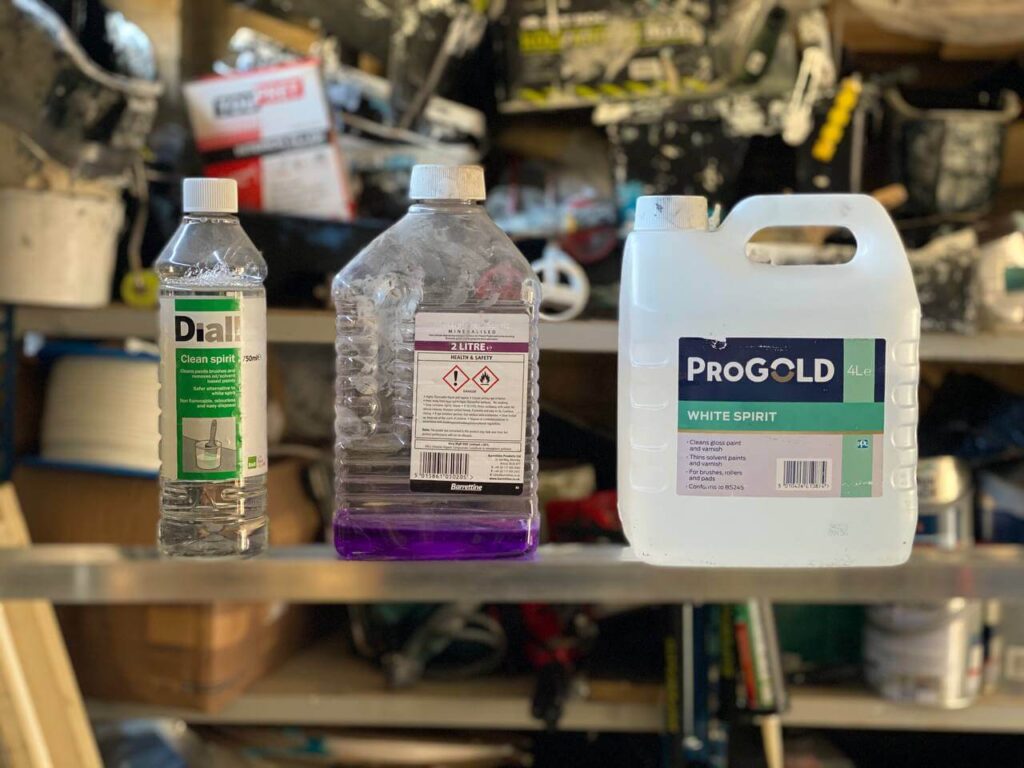
Many DIYers are not too sure what white spirit is and how useful it can be.
White spirit is a brilliant solvent that any keen DIYer should have a bottle of if they are planning any woodwork or painting tasks.
But why?
Well, to find about this magical solvent, we present our guide to the white spirit. Below, you’ll find out exactly what white spirit is, how to use it for wooden window repair and beyond. We’ll also be looking at white spirit alternatives and more.
So, if you’ve just grabbed a bottle of white spirit and aren’t sure what to do with it, this is the article for you!

White spirit is a mixture of chemicals.
These chemicals are known as petroleum hydrocarbons. It is a flammable and clear liquid that has many uses in the painting and decorating trade, as we will see throughout this article.
White spirit has loads of names across the world. In the UK, white spirit is also commonly known as turpentine substitute, Stoddard solvent, mineral spirits and paint thinner.

Methylated spirit is commonly known as denatured alcohol.
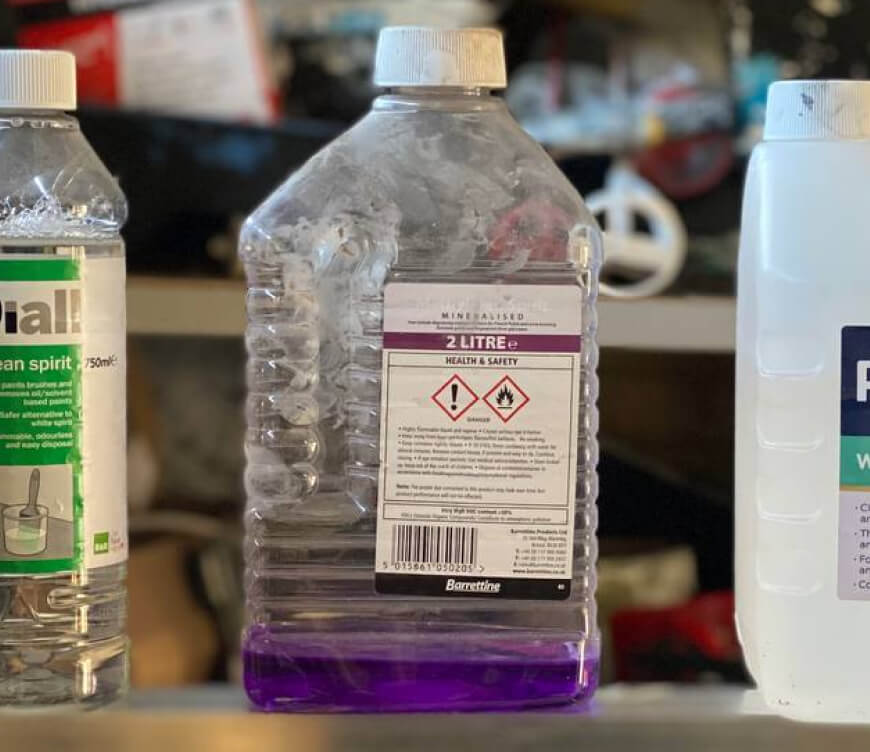
It is basically ethanol that has certain additives that make it poisonous, very smelly and dangerous to consume.
These additions to the ethanol ‘denature’ it.
The main additive in methylated spirits is methanol, hence why in the UK, Ireland, Canada and other places, it is known as methylated spirit.
Mineral spirits and paint thinner are often the same product. And are certainly used fairly interchangeably by most people. Mineral spirits, white spirit and paint thinners can be used to thin down oil-based paints and clean up an oily mess.
As we mentioned, white spirit has loads of names.
Paint thinner is simply a generalised term that describes what white spirit does. ‘Mineral spirits’ describes the composition of the solvent.
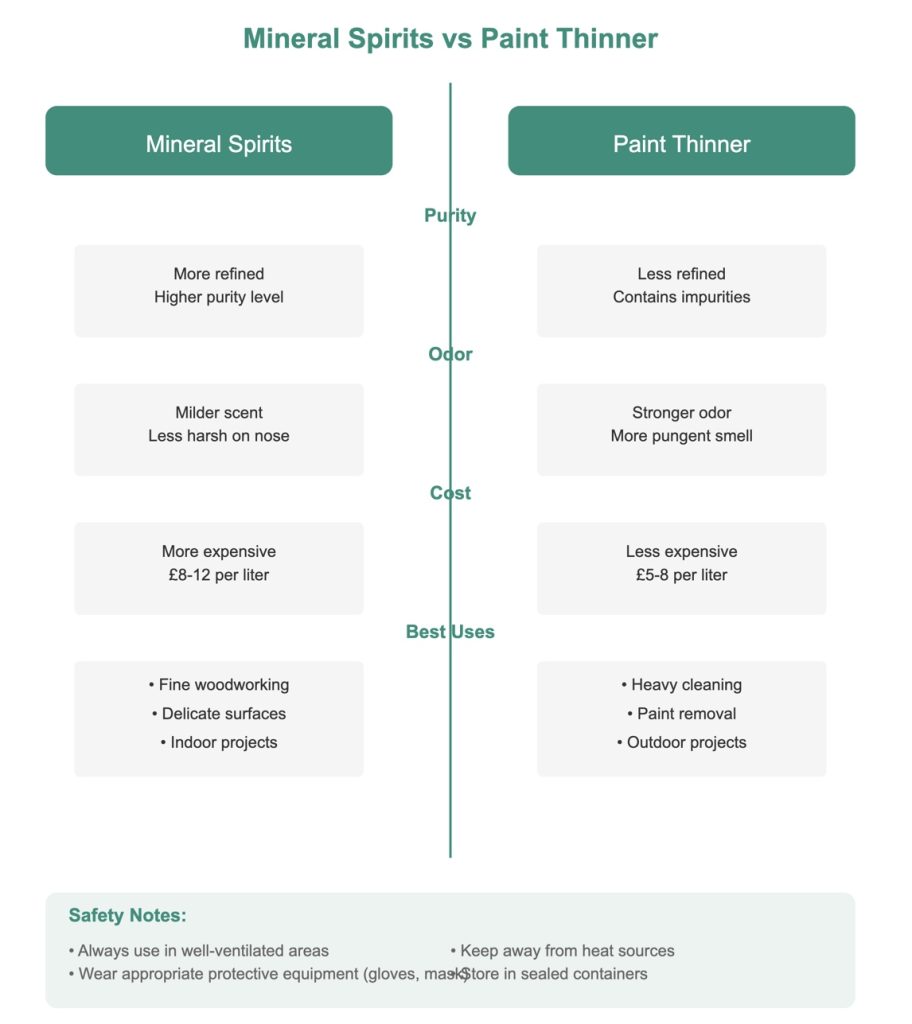
That just means it’s made from a mineral. In most cases, though, people are referring to white spirit or a similar solvent used for the same purpose.
We know that having several names for the same paint thinner can be very confusing, and they are interchanged universally by almost everyone who has ever picked up a paintbrush.
Just know that when someone says white spirit, paint thinner, mineral spirits or Stoddard solvent, they are probably referring to what you know to be white spirit.
So, white spirit is a petroleum-based solvent, and methylated spirit is an alcohol-based solvent.
But are there any other differences?
– Not really.
You can use methylated spirit in much the same way as you can white spirit.
Which one should you use?
– If you’ve used both to clean your paintbrushes or thin down paint before, you will know that there isn’t much difference.
Methylated spirit may evaporate a bit quicker than white spirit because it is pretty much pure alcohol.
You’ll need to check your paint every now and then to ensure the mix is still correct because of the evaporation, but you can use them interchangeably.
Some professional painters and decorators prefer to use white spirit and others swear by methylated spirit. Whatever gives you the best results is the best spirit to use!
Yes, of course. As we said above, white spirit and methylated spirit are used interchangeably in the painting and decorating world. Although some pros have a favourite, that is just a personal preference.
Both are solvents, and both are used for the same tasks in the painting world, so yes, you can absolutely use white spirit instead of methylated spirit. If you are still unsure about which paint thinner to use, check the directions on the paint you are buying. Manufacturers tend to recommend the best thinner to use with their paint.
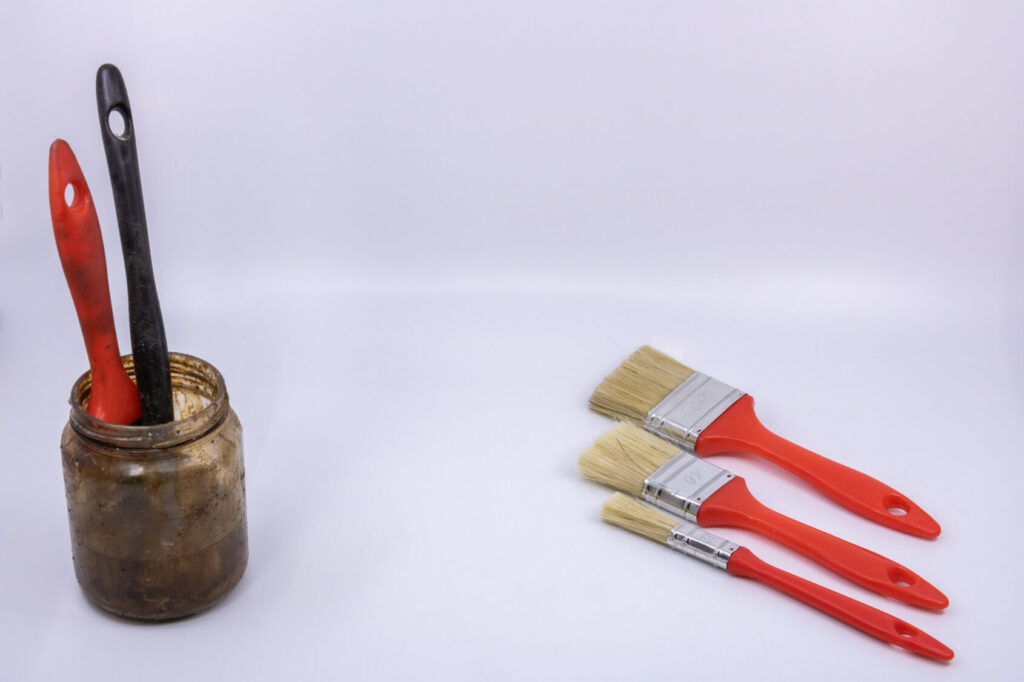
Cleaning paint brushes with white spirit is a straightforward process, especially if the paint is still wet. If the paint has dried, you’ll need to use a brush restorer first before proceeding with white spirit. Follow the steps below to restore your brushes effectively:
Before using white spirit, try to get as much paint out of the brush as possible by wiping it on a rag or piece of newspaper.
Once you’ve removed most of the paint, swap the white spirit for warm water and add some soap. Work the bristles thoroughly to remove any remaining residue.
Following these steps will ensure your brushes are clean, ready to use, and last for future projects.

Some oil-based paints and varnishes can be very thick, and this makes them difficult to apply. Cold weather can also thicken up oil-based paint. In these cases, white spirit can be used to thin the paint.
However, you only need a few drops of white spirit to thin the varnish or paint. If you add too much white spirit to oil-based paint, it can drip, it can ruin the colour and all kinds of other bad things.
So, if your oil-based paint is thick, add a couple of drops of white spirit, stir it and then see if you need some more. Go slowly, adding very little paint thinner and then mixing until you have a good consistency.
Our last section is some rapid-fire white spirit FAQs to help you with all of your decorating tasks.
The best way to get rid of the smell of white spirit is to open as many windows and doors as you can. If you can create a through draft (by opening a window and a door on opposite sides of the room), that is ideal.
Some people sprinkle bicarbonate of soda on white spirit too, as it is a fantastic natural odour solver. White spirit does evaporate pretty quickly, though, and the smell should go fairly soon after it evaporates. Good ventilation, though, will speed up the evaporation process and get rid of the smell.
Turpentine is a solvent made from tree resin, and white spirit is a petroleum-based solvent.
Just like when we discussed white spirit and methylated spirits all those words ago, turpentine and white spirit can be used for the same tasks. Most people prefer using either turpentine, white spirit or methylated spirit, but the choice is yours, really.
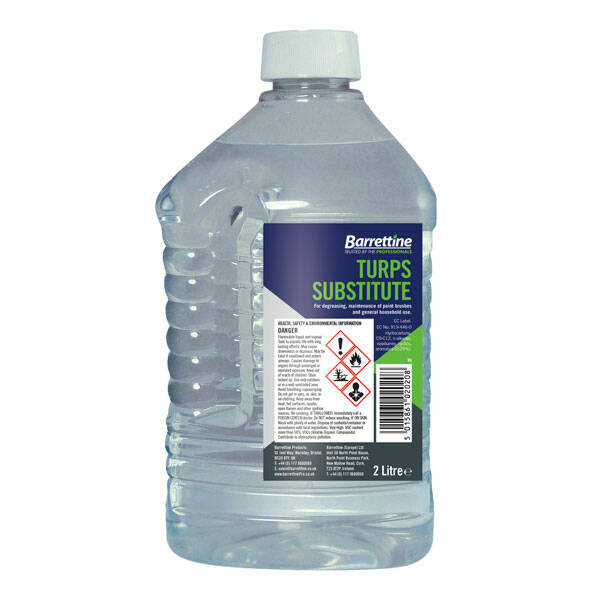
Turpentine is stronger than both of these alternatives, though. So extra care is needed when thinning the paint with it. Other than that, though, white spirit and turpentine do the same job. They are just made from different things.
As you may guess now that you’re an expert in paint thinners, you can use white spirit, turpentine and methylated spirit pretty much interchangeably. All of them are alternatives to each other.

The pros are likely to have a preferred choice but would likely grab any of these paint thinners in a pinch. So the alternatives to white spirit are the other paint thinners that we have discussed in the article.
Well, our white spirit adventure has sadly come to an end.
We hope this look at white spirit has helped you understand this handy solvent. Whenever you’re decorating, it is always worth having a bottle of white spirit (or another paint thinner) on hand for cleaning brushes. It makes cleaning tasks easier and can be used to thin paints carefully too.
Please explore our website further for more painting and decorating tips and tricks from the professionals. We have detailed articles about spraying paint, the best sprayers in the UK and a great deal more.